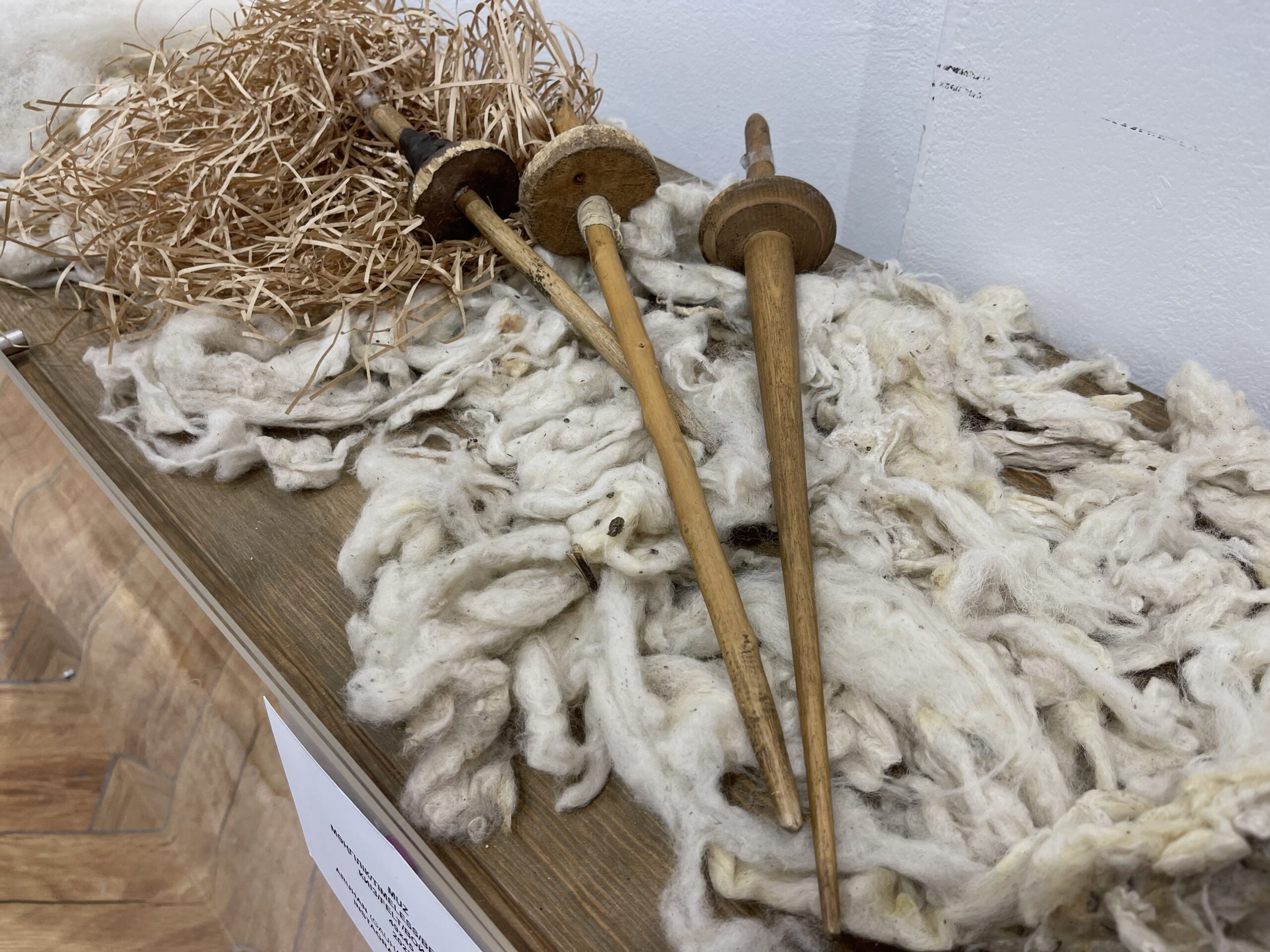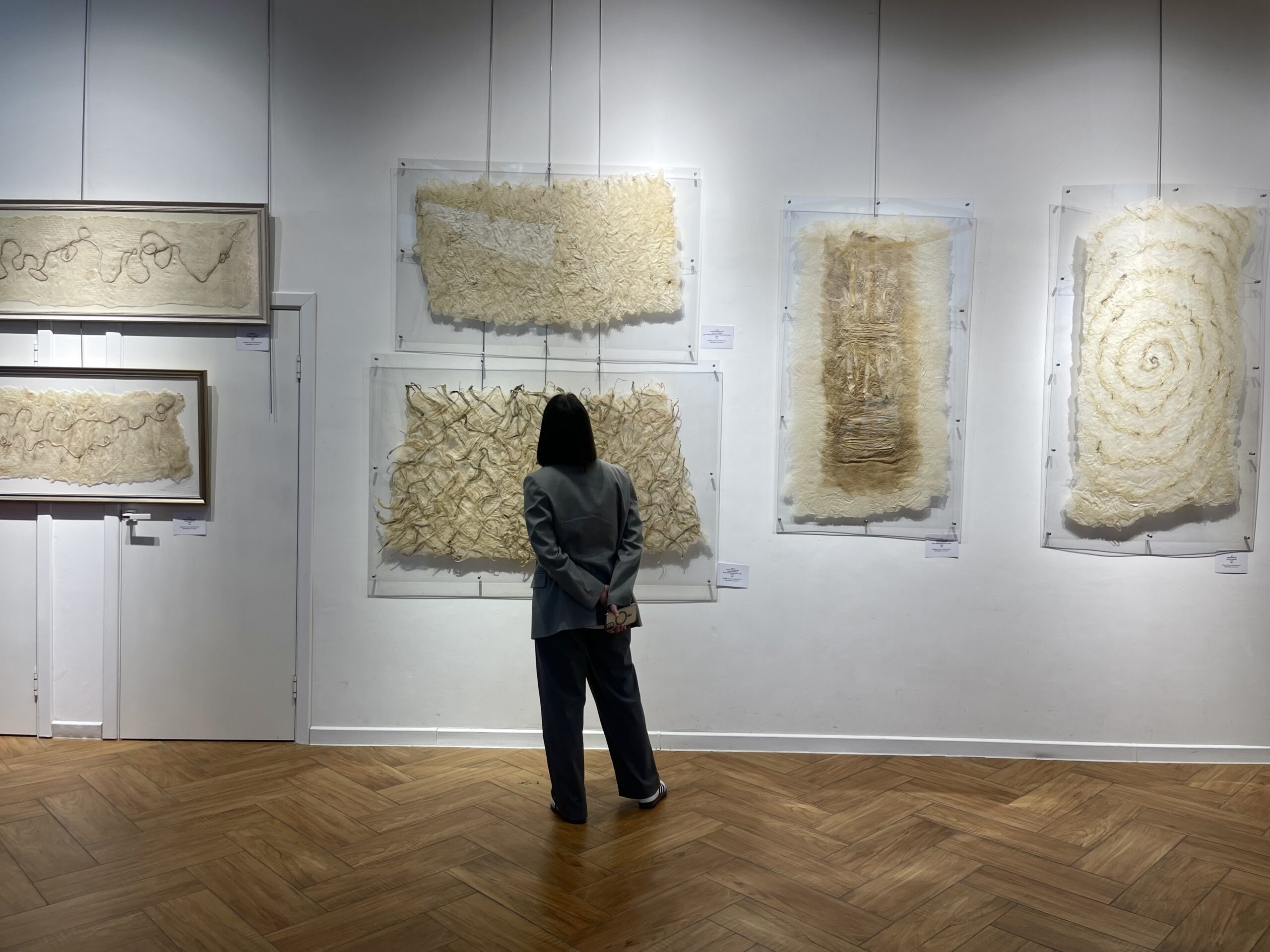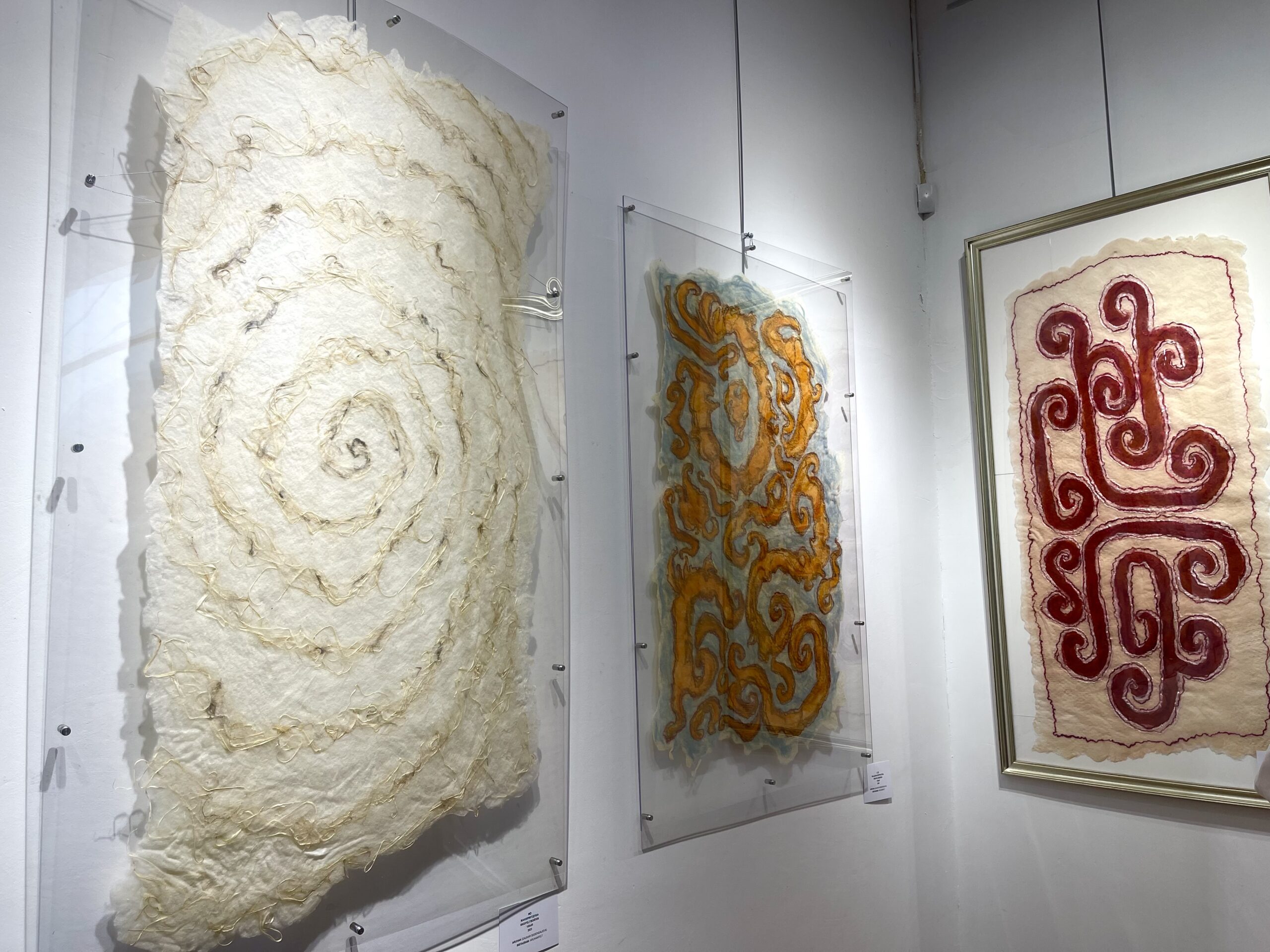ASTANA — Gauhar Bisengalieva, a Kazakh metamodern artist, presented her “Transformation and Rebirth” exhibition at Sal Seri art gallery in Astana on May 15.

Gauhar Bisengalieva, a Kazakh metamodern artist. Photo credit: The Astana Times/Aruzhan Ualikhanova.
Gauhar Bisengalieva began her creative journey in the music industry, working as a manager for the West Kazakhstan Orchestra. Immersed in music since childhood, this early influence significantly shaped her artistic career. However, her true calling emerged in working with felt and natural materials.
Felt and Natural Materials
Bisengalieva works under the artistic pseudonym Aruhan, in honor of her grandmother from whom she inherited her felt-making skills.
“My grandfather played the dombra beautifully, my grandmother sang and worked with felt. The exhibition features my grandmother’s spindles, which she used and passed down to me. This is a treasure I will pass on to my granddaughter,” the artist shared.

Bisengalieva’s grandmother’s spindles featured at the exhibition. Photo credit: The Astana Times/Aruzhan Ualikhanova.
She emphasizes the national carpet as the foundation of her work, symbolizing her identity and roots. For her, felt represents the love and traditions of her people. This unique and contemporary material carries memory and can express the artist’s deep emotions.
Felt has always been highly valued among nomads for its versatility. Nomads relied on felt to shield them from both cold and heat. For centuries nomadic communities have constructed their yurts using this natural material. Additionally, interior decorations, such as the floor-covering “tekemet” and the wall-hanging “syrmak,” were also crafted from felt, reflecting traditional craftsmanship and cultural significance.
“I showcase felt as art, revealing its transparency and beauty, immersing the viewer in the world of felt. My works speak of love for the steppe and nature,” she explains.
Artist’s Manifesto
In her manifesto, Aruhan describes her process of working with felt, which involves burning it with salt to transform it into paper.
“I start with a blank sheet and create my artworks solely from natural materials. This is the main concept of contemporary art—returning to nature and using natural materials that convey our connection to our origins and truth.”
One of the key pieces in the exhibition is the painting “Bata,” where the artist explores the theme of the human soul.

The artist views her works as a book of life, with each painting representing a separate chapter. Photo credit: The Astana Times/Aruzhan Ualikhanova.
“Our soul is eternal, despite being delicate and sometimes patched. All these threads are steppe grasses, symbolizing our connection to nature. The hands are depicted as pieces of wood, representing eternity and depth. One hand blesses us, while the other reaches towards the sky, asking for divine blessing,” Bisengalieva explains.
The artist views her works as a book of life, with each painting representing a separate chapter. Her works at the exhibition tell the story of how she found her path.
Originally from Almaty, Aruhan has a deep love for the mountains but working with felt has helped her discover the beauty of the Kazakh steppe.
“I love the Kazakh steppe; for me, it embodies true freedom,” she admits.
When asked who she is, Bisengalieva responds, “I am a solitary saxaul. I am that tree growing in the steppe, with deep roots, thriving in solitude.”
Art Without Boundaries
Aruhan believes that contemporary art should not have a name, allowing everyone to name her works as they see fit. Many of her pieces are named with Turkic runes, symbolizing immersion and community. The artist notes that she discovers something new in her works each time, reinforcing her concept of art as a process of constant discovery.

Aruhan discovers something new in her works each time, reinforcing her concept of art as a process of constant discovery. Photo credit: The Astana Times/Aruzhan Ualikhanova.
In the near future, Gauhar Bisengalieva has been invited to present her works in the U.K. at her solo exhibition “From Steppes to the City,” dedicated to the 200th anniversary of the city of Whitby.
The “Transformation and Rebirth” exhibition by Gauhar Bisengalieva is a profound and inspiring journey into the world of Kazakh culture, nature, and spiritual exploration.

